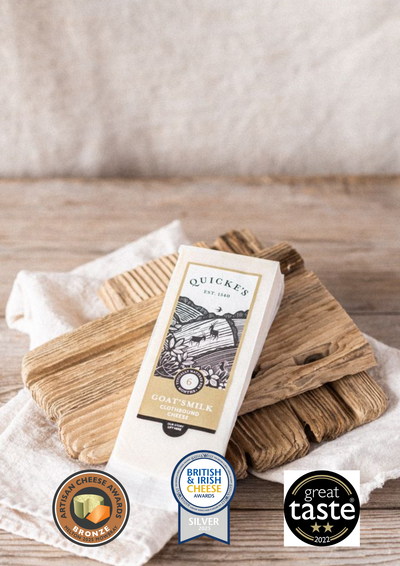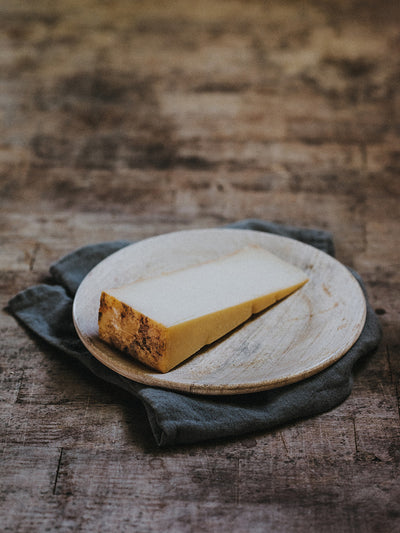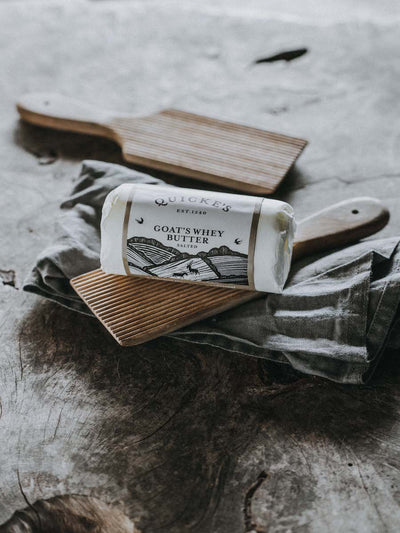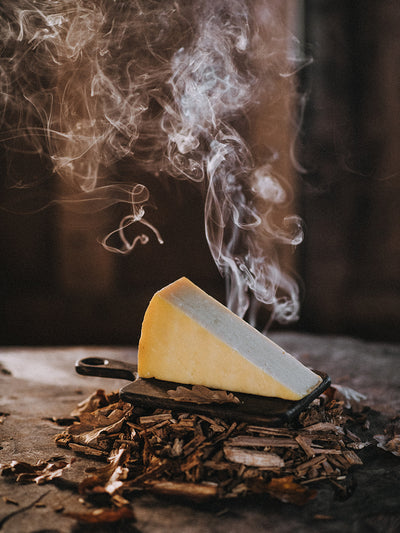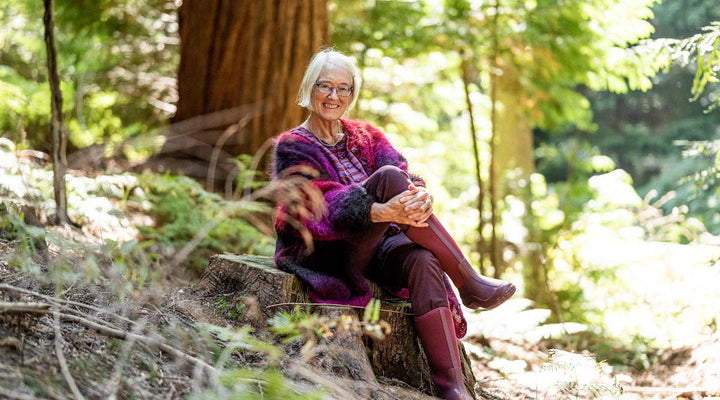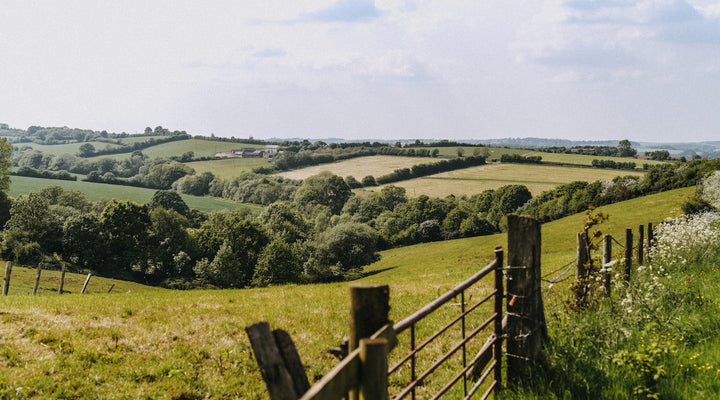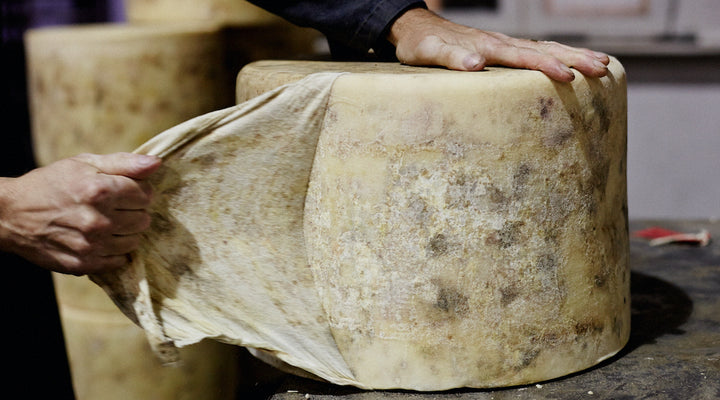NATURE
ARABLE
The green flowers of wheat, barley and oats look blowsy and rich, nodding in the fields. Later in the summer, comes the reckoning when we find out what amount of grain has filled those flowers. And for now, we feel wealthy with expectation. The crops have looked happy this year, particularly where they have followed red clover and grass: roots, animals and manure invigorate soils.
The grass wants to flower, too, and mostly we graze and cut to keep leafy and tender. Our young ladies, the rearing heifers, are out at pasture, enjoying our patchwork landscape of woods and fields. That wonderful diversity has its disadvantages: that rich insect life also has biting flies. The animals clump together to flick flies off each other’s faces. The animals spend warm afternoons at the top of the field, the flies less able to land on animals in the thermal breeze. We check daily, particularly eyes and developing udders, and use fly repellant and sometimes something to seal their teats temporarily so the flies don’t lay eggs there.
COWS
We’ve been discussing how best to graze our orchards and less productive (and more diverse) steep pastures. We have been grazing the youngest animals there because the fields are sheltered, and the grazing is not so nutritious to have them calve easily into the herd they were born from two years later. We are wondering whether to rear some later born spring calves to calve first in the late summer two and a bit years later. Those animals in their last playtime summer could mellow out in the orchards, without us needing to worry they are hitting the right weight.
The autumn calving cows are winding down to their holidays, eight weeks before calving, more if any are too lean and need to flesh out a bit. They can barely be bothered to come in for milking, and would rather stay chatting with their friends in the fields in the warm days and nights. We encourage them into the milking parlour as much to give them a new bit of grass and check them over to see they are all right, as much as for the amount of milk they are giving. The milk is very rich, right at the end of lactation, almost that they want to give the fat and the protein and can’t quite be bothered with the volume. The spring calvers are getting in calf, and in the first few weeks we use sexed semen, to conceive just heifer calves. We want as few dairy breed bull calves to rear as possible, as they are leaner and less beefy than calves from our little Angus bulls and butchers don’t value them as much. In June the cows’ elder daughters are frolicking with Mr Bull, having had one opportunity to breed a dairy heifer in May.
DAIRY
June milk is Malcolm’s favourite milk to make into cheese.The cows have settled into milking for the summer.Their milk is beautifully balanced,neither too fatty nor too proteiny, sets well and makes a lovely coloured cheese. It’s hot and humid in the cheese dairy, and fans cool the curd (and the people).Turning the beautiful young cheese in the cool of the cheese store is now a sought after task.
AFFINEUR OF THE YEAR
We were so excited to have the judging for Affineur of the Year at last. 8 people, Lincolnshire Poacher, Neal’s Yard, Brindisa, Paxton and Whitfield, No 2 Pound St, Buchanan’s Cheesemongers, Heritage Cheese and Rennet and Rind took 10 of our cheeses from one vat from February last year. They matured them in different ways and it was extraordinary to see them riffing from our cheese, recognisable and different. Perry James Wakeman from Rennet and Rind took the crown, for a cheese that had been tenderly and meticulously nurtured (and named Priscilla). She had developed some really interesting vegetal notes. She was both the judges’ favourite and the People’s Choice: we had all the 100 attendees taste all the cheeses and vote. We are planning next year and more styles of cheese to celebrate and develop the unacknowledged art of affinage, the maturing of cheese to achieve specific results.
EVENTS
It is so amazing to see visitors back on the farm for tours and for the Academy of Cheese courses. I’m so proud of these courses that I have helped develop. At Level 1, you taste 25 cheeses, learn how to taste and what makes them taste that way. People are now studying in 80 countries around the world. On our farm you can also see the cows in the field and the cheese being made, learning by seeing it for yourself.
RECIPE
The long evenings are too lovely for much cooking. I love to enjoy a summer cheeseboard with all those fresh salad leaves from the garden to start the meal. I love our lemony and nutty Devonshire Red giving a fresh summer splash to the cheeseboard. The colour comes from annatto, the seed of a South American tree. Originally cheesemakers used it to suggest the rich colour of full fat cheese from grazed pastures, and then the orange became what customers looked in these cheeses. It’s a lovely colour contrast to the greens of the salad. I also add a few rose petals and borage flowers for colour, aroma and flavour. I leave borage to seed itself in the garden so you’ve always got those lovely cucumber flavoured bright blue flowers to pick. Serve with your choice of salad dressing: I love a fresh olive oil (current favourite from Palestine), cider vinegar and pepper. Tom loves balsamic vinegar on its own. Our Japanese visitor, Ai Shimizu, loves soy sauce and sesame oil. Sometimes I’ll pick at a few leaves naked to get the fresh green flavours from the salad sing. All work with the lemony, nutty notes of the Devonshire Red. And that pairs perfectly with a chilled glass of Sharpham Dart Valley Reserve white wine or Sandford's Devon Red cider - what grows together goes together!
MARY QUICKE

